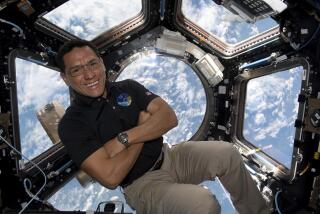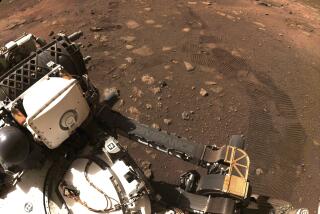Mars rover Opportunity breaks distance record; what took so long?
After nine years on the job, NASA’s Mars rover Opportunity has finally broken a 40-year-old record for the longest distance driven on another world.
The Mars rover Opportunity has been exploring the Red Planet’s surface since landing in January 2004. The last record for any NASA vehicle was set by Apollo 17 astronauts in December 1972 when they drove a lunar rover 22.21 miles over the moon’s surface over three days. Opportunity finally inched past that mark Thursday, tacking on 263 more feet for a total distance traveled of 22.22 miles.
Why did it take the Mars rover nine years to break a four-decade-old record — one that astronauts set in the equivalent of a long weekend?
Crucial differences between the two vehicles may hold the answer. The lunar rover had human drivers, rather than being operated remotely from Earth, millions of miles away. Opportunity waits for daily commands sent from Earth before making any big moves. The engineers, working on limited information seen through the rover’s cameras, proceed with caution over rocky and unfamiliar terrain. They rarely, if ever, push Opportunity to its maximum speed of about 0.11 of a mile per hour.
A human geologist, by contrast, is able to cover a lot more ground, according to Caltech geologist John Grotzinger, lead scientist for the Curiosity rover, which landed on the Red Planet last year to look for life-friendly environments.
“The problem with the rover is what the time scale of discovery is, compared to walking on your feet,” Grotzinger said in a Q&A before Curiosity landed. “Something that might have taken you an hour is going to take three months.”
On Earth, the average human’s walking speed is about 3 mph. But the Apollo astronauts’ lunar rover was able to cover about 8 miles in an hour — roughly 70 times faster than its roving Martian competitor.
The key to the new distance record lies in time, rather than speed: Opportunity has operated about 37 times longer than its original 90-day mission.
Follow me on Twitter @aminawrite.






